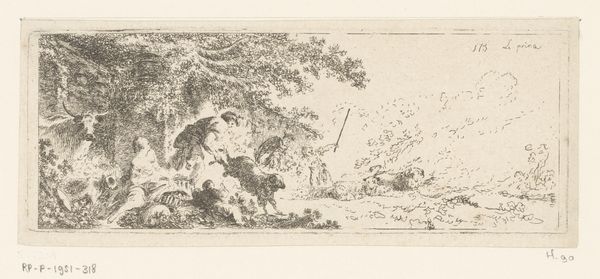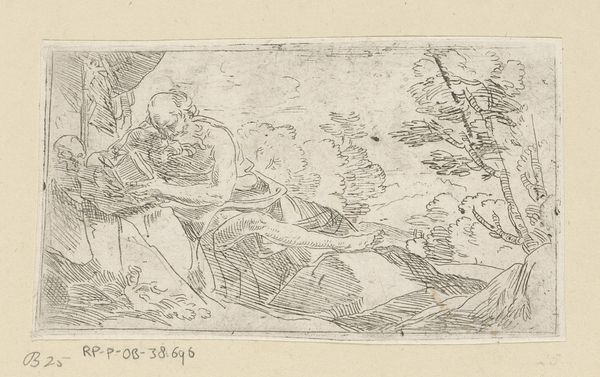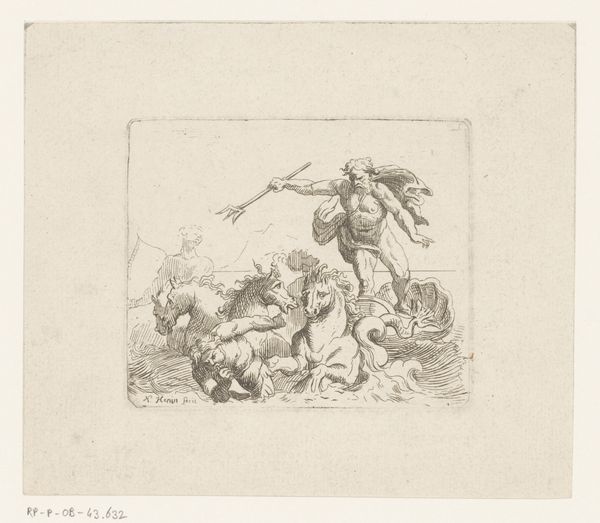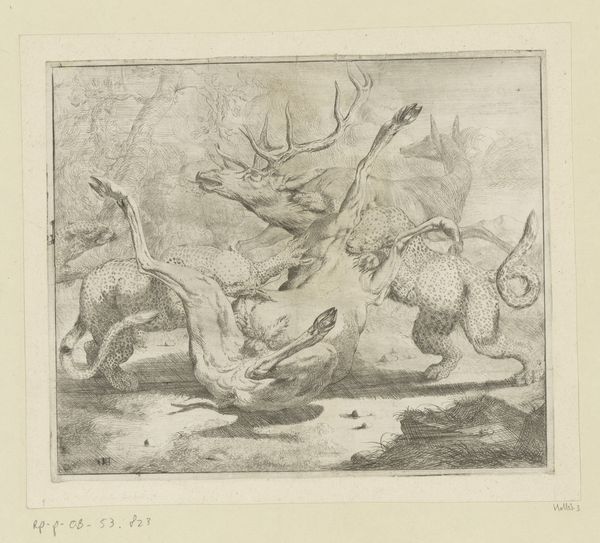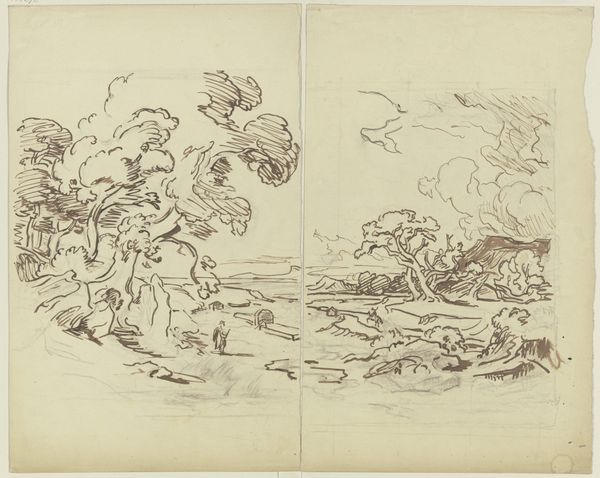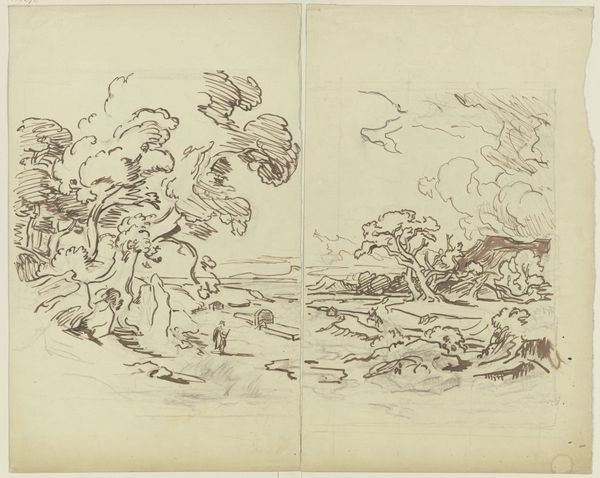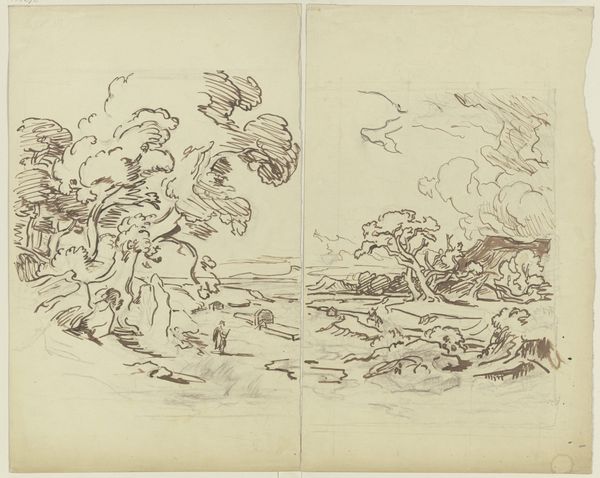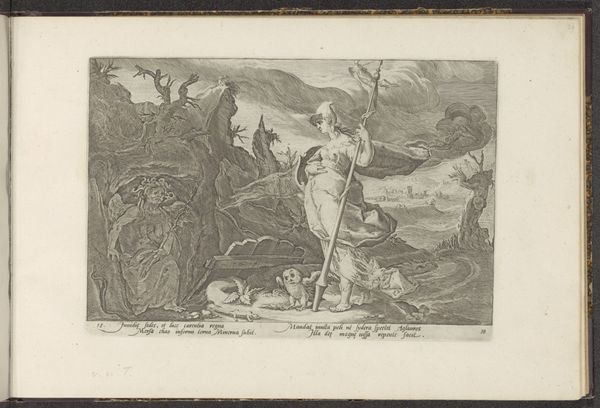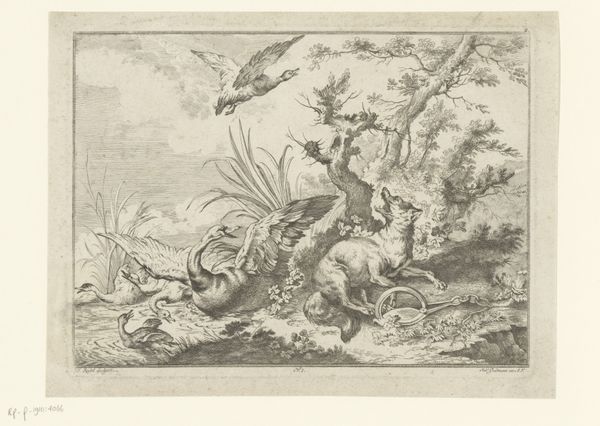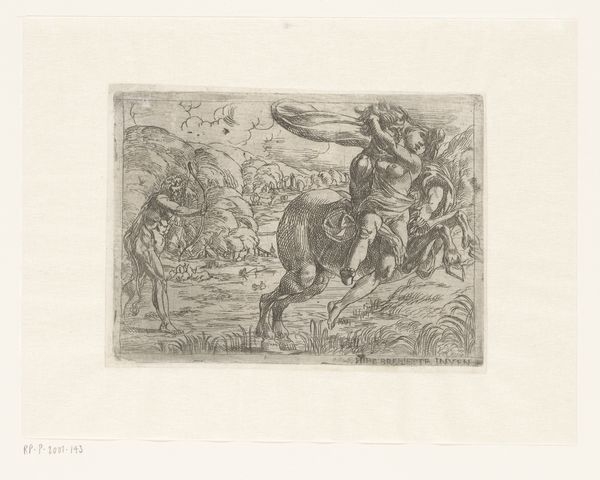
etching, engraving
#
baroque
#
etching
#
pencil sketch
#
figuration
#
engraving
Dimensions: height 154 mm, width 205 mm
Copyright: Rijks Museum: Open Domain
Curator: This is an etching entitled "Dolfijn met nimfen en putti," dating from 1666 to 1799 and held here at the Rijksmuseum. The creator of this work is unknown. Editor: My first thought is it feels frenetic. Look at the swirling lines used to create the dolphin's form and the chaotic arrangement of the figures riding on its back. Curator: Indeed, there is a dynamic tension in the composition. The use of line is critical. Observe how the artist employs hatching and cross-hatching to create depth and shadow, animating the scene. It evokes a certain Baroque sensibility. Editor: Precisely! Etching and engraving were instrumental in circulating Baroque ideals to wider audiences through accessible, printed formats. Imagine the craftsman repeating and perfecting each mark, transforming the metal plate that would then disseminate these classical themes. Curator: Note the integration of classical motifs: nymphs, putti, and the dolphin. The arrangement reflects the visual principles evident in grander paintings of the era, echoing similar thematic representations from the Baroque. The dolphin form itself looks distorted, abstracted. It doesn't appear real, but functions as a signifier of the mythological rather than a specimen of naturalism. Editor: And there’s a labor component to be highlighted! What kind of specialized knowledge of acids and metal did the etcher possess, what kind of studio environment was required to perform such alchemic work? Where and how were these tools sourced? The creation becomes an orchestration of social and material history. Curator: Fair point, but I am more interested in how the work plays on the artistic license afforded to an image created from disseminated plates: that is to say, if viewers saw an oil painting with these characteristics, their effect would be different than from the lines and materiality of the print format. This makes it very fascinating from a purely semiotic, aesthetic standpoint. Editor: While I am more concerned with understanding it through its industrial implications, which are what determine, in effect, how it signified! Curator: An interesting juxtaposition. Editor: Indeed.
Comments
No comments
Be the first to comment and join the conversation on the ultimate creative platform.

